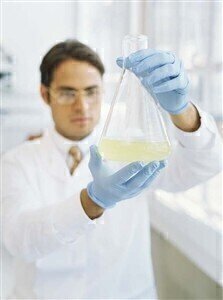News & Views
Is Urine the Next Source of Green Energy?
Aug 16 2014
As far-fetched and unpalatable as it may sound, human urine could be the next breakthrough in environmentally-sustainable energy production.
Of course, analysing our own pee is nothing new. Urine samples can yield all sorts of results and data about the sample donor, from the presence of drugs in their system to any ailments the body might be suffering to whether or not a female donor is pregnant. Ever more sophisticated ways have been developed in order to better understand urine samples. In fact, there are numerous urine analysers on the market – as you can see in our Buyer's Guide. Now, however, scientists are concentrating on harnessing the potential energy capabilities of urine for an alternative energy source.
In Korea, scientists successfully isolated carbon in urine samples which could potentially replace platinum as the catalyst for fuel cells. Fuel cells work to collect energy from a chemical reaction and the necessity of using platinum has been a costly one. Up until now, artificial carbon substitutes have also been expensive.
However, after boiling away the water content in healthy urine samples, the Korean scientists then super-heated the remaining residue to temperatures of up to 1,000°C, thus carbonising the urine and leaving it very porous – which is ideal for a fuel cell catalyst. Furthermore, the evaporated elements of the urine can also be collected and used as de-icing salts, further increasing efficiency and the usefulness of what has been traditionally thought of as a waste product.
Of course, urine hasn’t been viewed simply as waste by everyone. Back in 2010, Heriot Watt University in Edinburgh began their own investigations into the catalyst potential of urine via the Carbamide Power System, which involved using urea, an element prevalent in human urine.
In 2011, Bristol University investigated employing bacteria to break down the organic molecules naturally found in urine and as a result, produce energy. Two years later in 2013, the same team teamed up with the Bristol Robotics Laboratory and the University of West England to actually put the theory into practice, powering such electronic devices as a Samsung telephone enough in order to make calls, send messages and even surf the internet. In a 24-hour-period, the phone used up a total of 17 ounces of urine.
According to this latest research from Korea, 0.2 ounces of carbon found in urine can be derived from just one litre of urine. If this practice is employed on a large scale in public restrooms, it is easy to see the potential for a huge amount of natural and renewable resource. Furthermore, it would be turning a problem into a solution by converting a waste product into something genuinely useful. Where these urine “harvest farms” would be located, however, is another question. Since the urine would be required to be dried outdoors in the sunshine, olfactory hazards would have to be taken into consideration … but pee-power is certainly worth a closer look.
Digital Edition
Lab Asia 31.2 April 2024
April 2024
In This Edition Chromatography Articles - Approaches to troubleshooting an SPE method for the analysis of oligonucleotides (pt i) - High-precision liquid flow processes demand full fluidic c...
View all digital editions
Events
May 05 2024 Seville, Spain
InformEx Zone at CPhl North America
May 07 2024 Pennsylvania, PA, USA
May 14 2024 Oklahoma City, OK, USA
May 15 2024 Birmingham, UK
May 21 2024 Lagos, Nigeria





.jpg)












